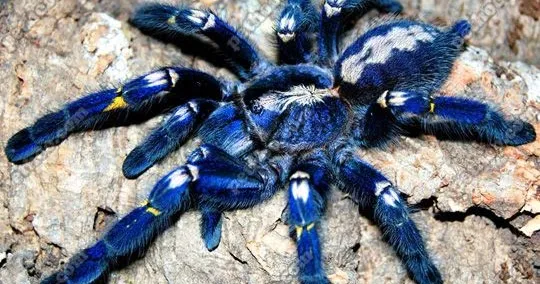The Gooty Sapphire Tarantula, scientifically known as Poecilotheria metallica, is a highly sought-after and captivating species within the tarantula world. Known for its striking metallic blue and grey coloration, this arboreal tarantula originates from the Andhra Pradesh region of India. Their beauty, combined with their unique care requirements, makes them a fascinating subject for both experienced and aspiring tarantula keepers. This guide provides essential information for those interested in keeping these beautiful creatures.
Gooty Sapphire Tarantula Overview
The Gooty Sapphire Tarantula is a species that captivates with its stunning appearance. This tarantula is an arboreal species, meaning it lives primarily in trees. They are fast growers and can reach a considerable size, making proper care and enclosure setup essential. They are known to be a more challenging species to keep, and this guide will help to keep them healthy and happy.
Appearance and Characteristics
The defining feature of the Gooty Sapphire Tarantula is its vibrant coloration. They display a metallic blue and grey pattern on their carapace, legs, and abdomen, making them one of the most visually stunning tarantula species. Their legs are long and slender, perfectly adapted for climbing and navigating their arboreal habitat. The abdomen is often marked with intricate patterns that add to their overall beauty. This species’ unique look is what makes it so desirable to pet owners. (Image gooty-sapphire-tarantula-overview.webp)
Lifespan and Behavior
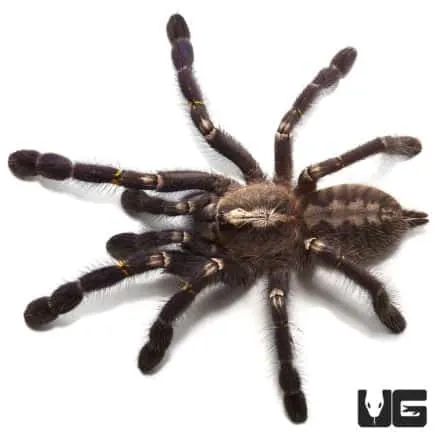
Female Gooty Sapphire Tarantulas can live for 12 to 15 years, while males typically have a shorter lifespan, around 3 to 5 years. They are nocturnal creatures, primarily active during the night. In the wild, they create silken retreats in tree hollows or under loose bark. These tarantulas are known for their speed and can be defensive, so handling should be done with extreme caution and experience. Always research the behavior of this type of tarantula before purchasing.
Gooty Sapphire Tarantula Habitat Setup
Creating a suitable habitat is crucial for the health and well-being of your Gooty Sapphire Tarantula. Given their arboreal nature, the enclosure should prioritize height over floor space. The setup should mimic their natural environment to ensure they thrive in captivity. Proper ventilation, temperature, and humidity are essential elements of a good enclosure. (Image gooty-sapphire-tarantula-habitat.webp)
Enclosure Size and Type
A tall, well-ventilated enclosure is a must for the Gooty Sapphire Tarantula. A glass or acrylic enclosure with a secure lid is ideal. For a juvenile, a container approximately 8x8x12 inches can be suitable, while adults require a minimum of 12x12x18 inches. Avoid enclosures that are too large, as it can make it difficult for the tarantula to find food. The enclosure should be escape-proof because these tarantulas are very quick.
Substrate and Decor

The substrate should be several inches deep to allow for burrowing and humidity retention. A mix of peat moss, coconut fiber, and a bit of vermiculite is a good choice. Decorate the enclosure with cork bark, branches, and artificial or live plants to provide hiding places and climbing opportunities. These additions will make the tarantula feel more secure. Make sure to add a water dish.
Temperature and Humidity
Maintain a temperature range of 75-85°F (24-29°C). Use a heat mat on the side of the enclosure if necessary, but avoid placing it directly under the substrate to prevent overheating. Humidity should be kept at around 65-75%. Regular misting and a water dish will help maintain these levels. A hygrometer is recommended to monitor humidity. (Image gooty-sapphire-tarantula-humidity.webp)
Gooty Sapphire Tarantula Diet and Feeding
Feeding your Gooty Sapphire Tarantula is a critical part of their care. They are voracious eaters and require a diet that meets their nutritional needs. A varied diet, appropriate feeding frequency, and clean water will contribute to their health and longevity. Make sure the tarantula eats its prey before adding more. (Image gooty-sapphire-tarantula-feeding.webp)
Feeding Frequency and Prey
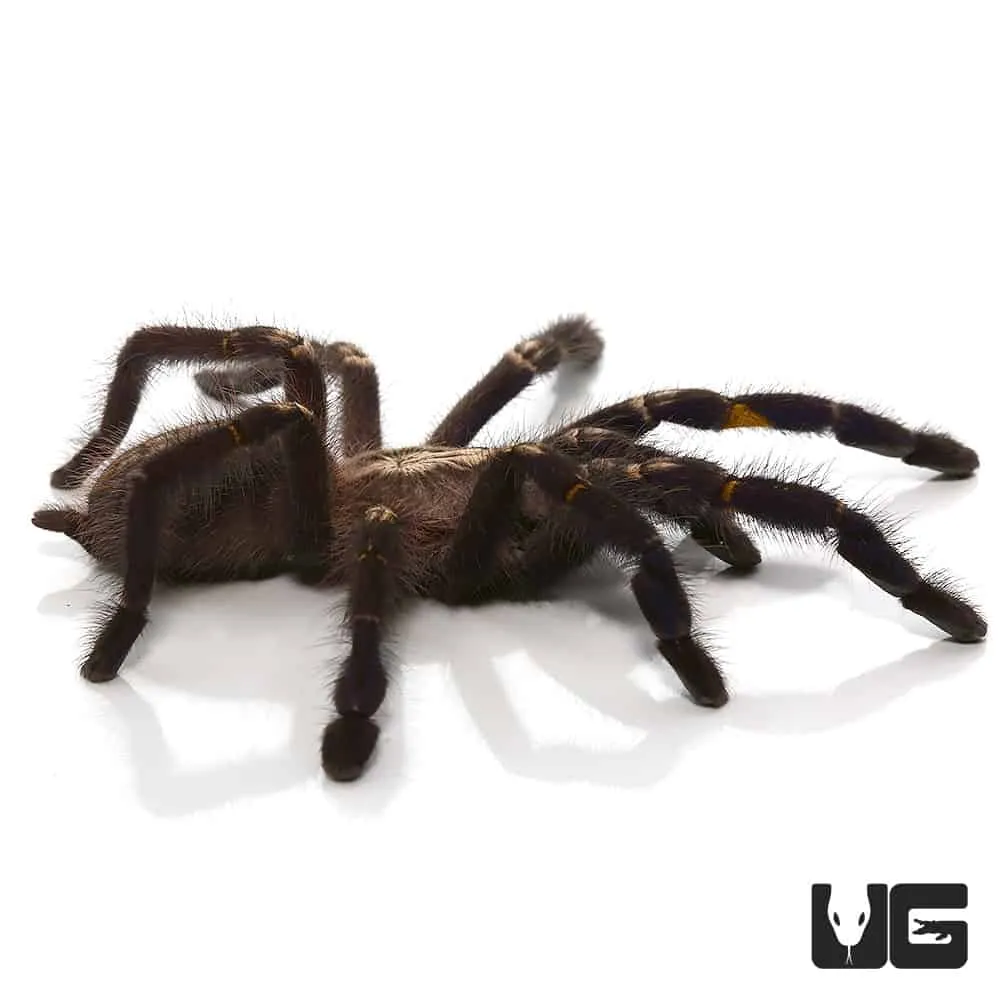
Juveniles should be fed 2-3 times a week, while adults can be fed every 1-2 weeks. The diet should consist of insects such as crickets, roaches, mealworms, and other appropriately sized prey. The prey size should be no larger than the tarantula’s body. Remove any uneaten prey within 24 hours to prevent stress and potential injury to the tarantula. Always buy your insects from a reputable vendor.
Water and Hydration
Always provide a shallow water dish with fresh water. Change the water regularly to keep it clean. Gooty Sapphire Tarantulas also get hydration from their food, but a water source is still necessary. Misting the enclosure lightly can help maintain humidity, but avoid oversaturating the substrate.
Gooty Sapphire Tarantula Handling and Safety
While the Gooty Sapphire Tarantula is a beautiful species, it is known to be defensive and fast. Therefore, handling should be approached with extreme caution or avoided altogether. This section will provide insights on handling precautions and how to recognize signs of stress and illness. Always be aware of your surroundings and take your time. (Image gooty-sapphire-tarantula-handling.webp)
Handling Precautions
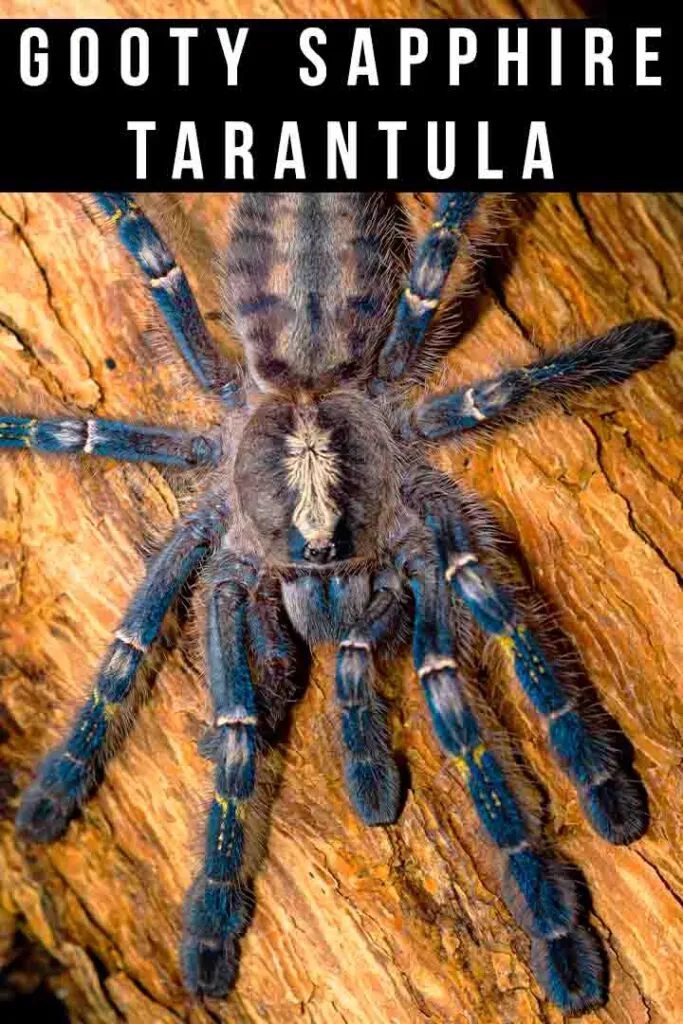
Handling should be done only when necessary, such as for enclosure maintenance or health checks. Approach the tarantula slowly and avoid sudden movements. Never handle the tarantula if it appears agitated or defensive. Always handle over a soft surface, like a bed or a carpet, to minimize the risk of injury if the tarantula falls. Be aware of the tarantula’s fangs and urticating hairs.
Signs of Stress and Illness
Observe your tarantula regularly for signs of stress or illness. These include a lack of appetite, lethargy, changes in posture, and erratic behavior. If you notice any of these symptoms, consult with an experienced tarantula keeper or a veterinarian familiar with exotic pets. Avoid handling a stressed tarantula to prevent further stress. Look for signs of molting, which may cause it to stop eating. (Image gooty-sapphire-tarantula-molting.webp)
Gooty Sapphire Tarantula: 5 Top Care Tips
Here are the top 5 essential care tips to ensure your Gooty Sapphire Tarantula thrives in captivity. Following these tips will help ensure your tarantula lives a long and happy life.
Tip 1 Consistent Humidity Levels
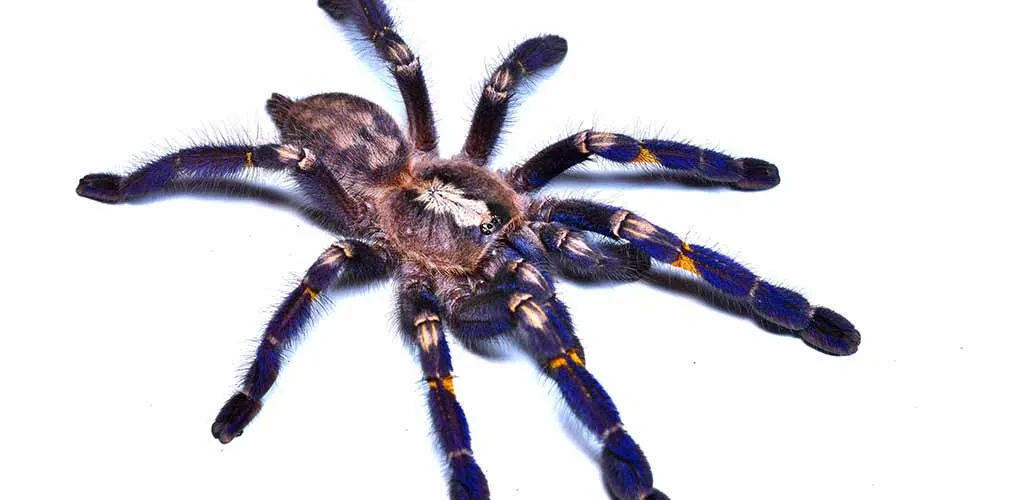
Maintain consistent humidity levels between 65-75% by misting the enclosure and providing a water dish. Fluctuations can stress the tarantula and hinder molting.
Tip 2 Appropriate Substrate Depth
Provide a substrate depth of at least 4-6 inches to allow for burrowing and humidity retention. This will also help the tarantula feel more secure.
Tip 3 Proper Ventilation
Ensure proper ventilation to prevent mold growth and maintain air quality. Cross-ventilation is ideal.
Tip 4 Secure Enclosure
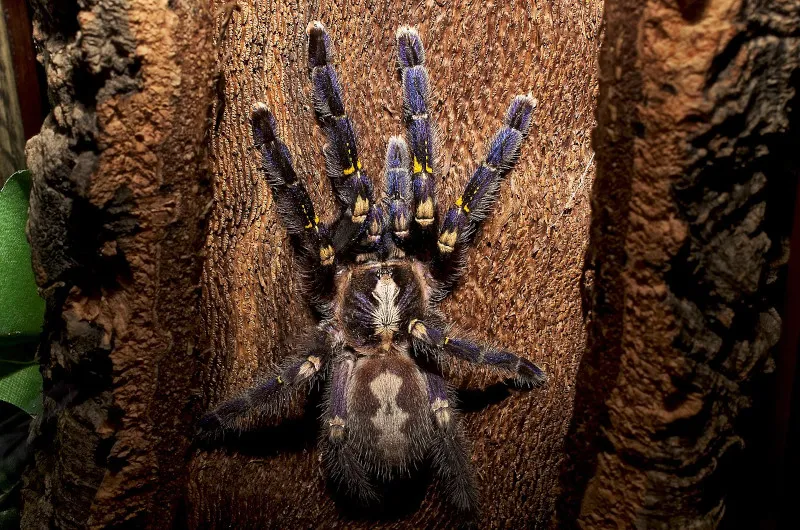
Use a secure enclosure with a tight-fitting lid. Gooty Sapphire Tarantulas are fast and can escape easily.
Tip 5 Regular Monitoring
Regularly monitor your tarantula’s behavior, eating habits, and overall health. Early detection of any issues can prevent serious problems.
Caring for a Gooty Sapphire Tarantula can be a rewarding experience for any pet owner. By understanding their needs and following the care guidelines, you can provide a happy and healthy environment for your tarantula. Remember to always do your research and be prepared to commit to their specific care requirements. With proper care, your Gooty Sapphire Tarantula can be a stunning addition to your home.
